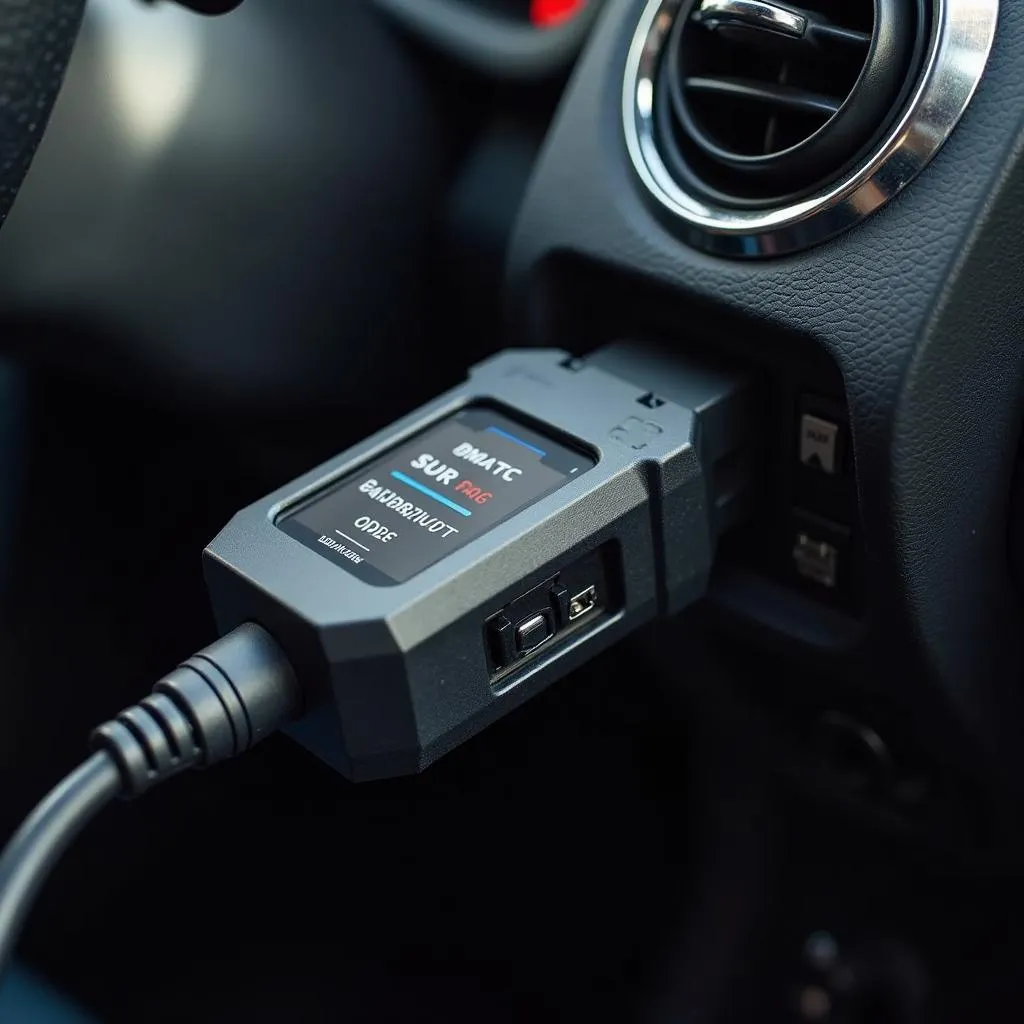The brake warning light on your dashboard is a crucial safety feature, especially if you drive a 2013 Honda Civic. When illuminated, it signifies a potential issue within your braking system demanding immediate attention. This comprehensive guide delves into the common causes behind a 2013 Honda Civic brake warning light and provides insights into troubleshooting and resolving these issues.
Decoding the 2013 Honda Civic Brake Warning Light
The brake warning light in your 2013 Honda Civic can illuminate for several reasons, ranging from a simple parking brake engagement to more serious issues like low brake fluid or a malfunctioning ABS system.
Ignoring this warning light can jeopardize your safety and lead to costly repairs. Therefore, it’s crucial to understand the various reasons behind its activation.
Common Causes of a 2013 Honda Civic Brake Warning Light
Here’s a closer look at the most common culprits behind a 2013 Honda Civic brake warning light:
1. Engaged Parking Brake
One of the simplest explanations is an engaged parking brake. Always ensure your parking brake is fully released before driving.
2. Low Brake Fluid
Low brake fluid is a serious issue often indicated by the brake warning light. Brake fluid is vital for transmitting force from the brake pedal to the wheels, ensuring effective braking. A leak in the brake lines or worn brake pads can lead to low brake fluid.
3. Worn Brake Pads
Brake pads are designed to wear down over time. When they reach a certain thickness, the brake warning light will activate to signal the need for replacement. Driving with worn brake pads compromises your braking distance and safety.
4. ABS System Malfunction
The Anti-lock Braking System (ABS) prevents wheel lockup during hard braking, enhancing vehicle stability and control. If the ABS system malfunctions, the brake warning light might illuminate alongside the ABS warning light. This malfunction could be due to a faulty ABS sensor or control module.
5. Brake Light Switch Issue
The brake light switch activates your brake lights when you press the brake pedal. A malfunctioning brake light switch can disrupt this signal, potentially causing the brake warning light to illuminate.
Troubleshooting a 2013 Honda Civic Brake Warning Light
While it’s recommended to seek professional help when the brake warning light illuminates, you can perform some basic checks before heading to a mechanic.
- Check Your Parking Brake: Ensure your parking brake is fully disengaged.
- Inspect Brake Fluid Level: Carefully open the brake fluid reservoir and check the fluid level. If it’s below the minimum mark, add the recommended brake fluid type. However, be cautious, as low brake fluid often indicates a leak that requires professional attention.
- Inspect Brake Pads: If you’re comfortable with basic car maintenance, visually inspect the brake pads through the wheel spokes. If they appear significantly worn, consult a mechanic for replacement.
“A visual brake pad inspection can give you a good indication of their condition,” says John Smith, a senior automotive technician at XYZ Auto Repair. “However, it’s always best to consult a professional for a thorough brake system inspection, especially if you notice any unusual noises or sensations while braking.”
Addressing a 2013 Honda Civic Brake Warning Light: Seeking Professional Help
For anything beyond the basic checks, it’s crucial to consult a qualified mechanic. They have the expertise and tools to diagnose and address the underlying issue effectively. Delaying professional help can exacerbate the problem, leading to more extensive and costly repairs.
Here are a few instances where seeking professional help is non-negotiable:
- The brake warning light remains illuminated even after adding brake fluid.
- You notice brake fluid leaks under your car.
- You hear unusual grinding or squealing noises while braking.
- Your brake pedal feels spongy or goes all the way to the floor.
- Your car pulls to one side when braking.
A professional mechanic will likely connect an OBD-II scanner to retrieve diagnostic trouble codes, providing valuable insights into the issue. They can then perform a comprehensive inspection of the entire braking system, including the brake lines, calipers, rotors, and ABS components.
Importance of Timely Brake System Maintenance
Regular brake system maintenance is crucial for optimal performance and safety. Here are some preventive measures to keep your brakes in good shape:
- Regular Brake Fluid Flushes: Consult your owner’s manual for the recommended brake fluid flush intervals. Fresh brake fluid helps maintain optimal hydraulic pressure and prevents corrosion within the system.
- Timely Brake Pad Replacements: Adhere to the manufacturer’s recommended brake pad replacement schedule. Driving with worn brake pads not only compromises safety but can also damage the rotors, leading to more expensive repairs.
- Routine Brake Inspections: Incorporate routine brake inspections into your vehicle maintenance schedule. A professional mechanic can identify potential issues early on, preventing them from escalating into major problems.
Conclusion
The brake warning light in your 2013 Honda Civic is a critical safety feature that should never be ignored. Understanding its various triggers and knowing how to respond promptly can save you from costly repairs and ensure your safety on the road. While simple checks like verifying the parking brake engagement and inspecting brake fluid levels can be done at home, seeking professional help is crucial for anything beyond that. Remember, timely maintenance and a proactive approach to addressing warning signs are key to a safe and enjoyable driving experience.

